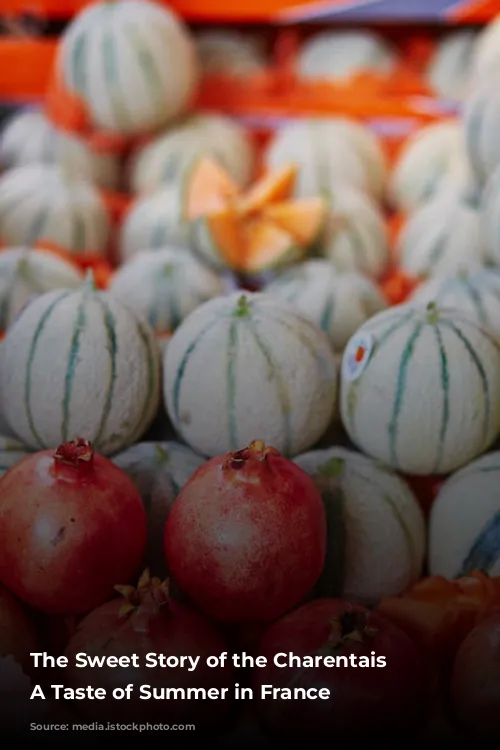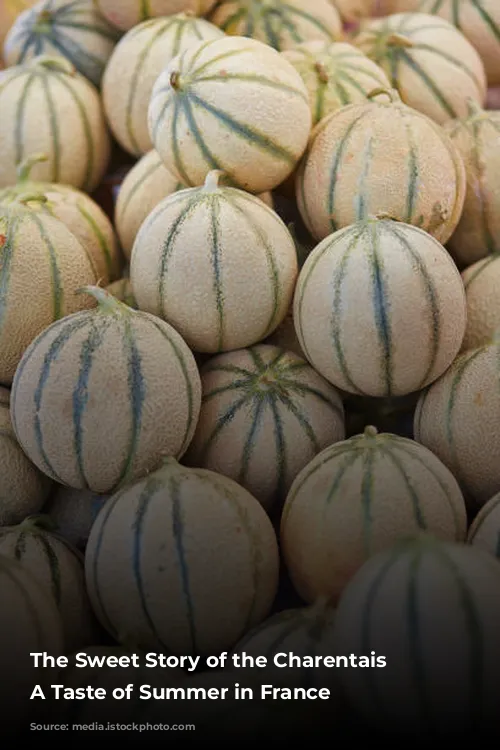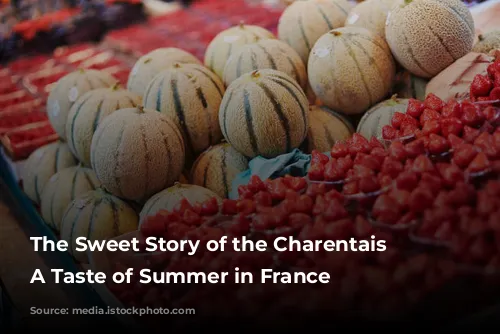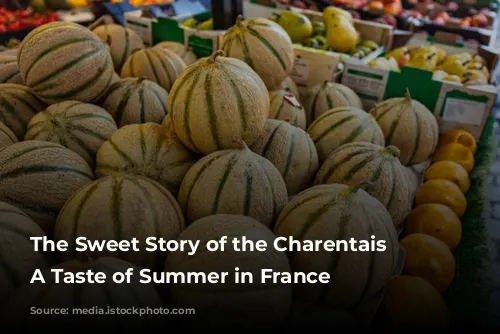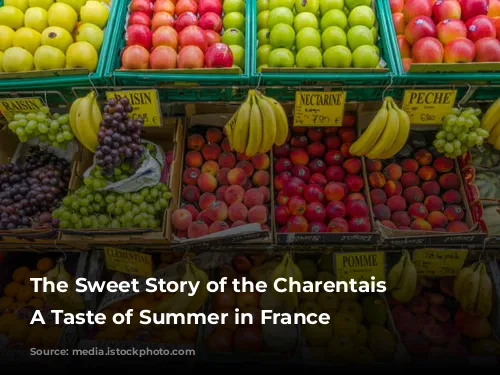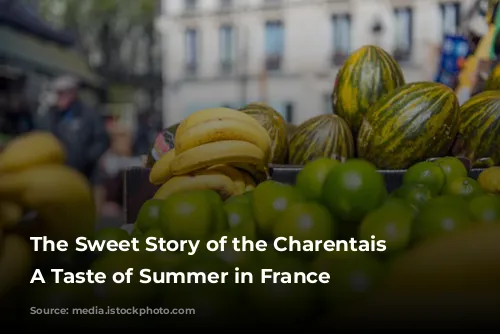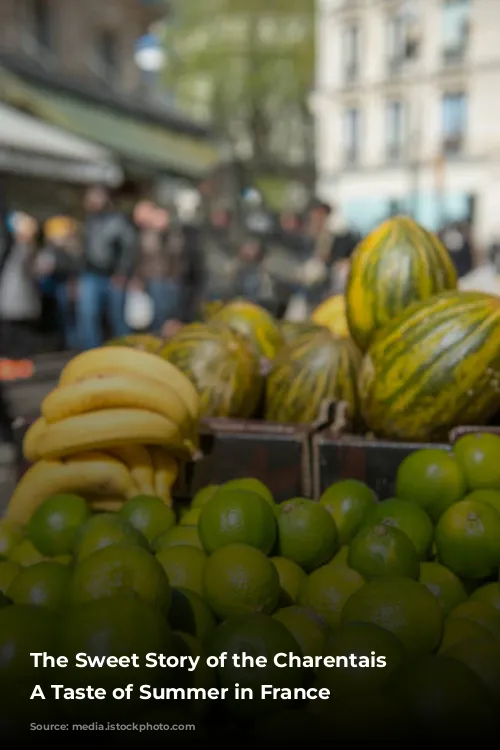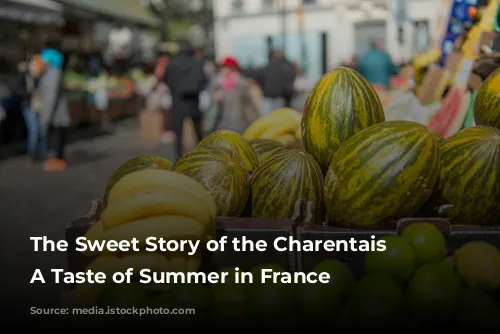The Charentais melon, a true emblem of summer in France, is a treat that awakens the senses. Its arrival heralds the warmth of the season, promising juicy, sweet slices of pure pleasure. While available from April to October, the peak season for this beloved fruit is from June to September, when its flavor reaches its zenith.
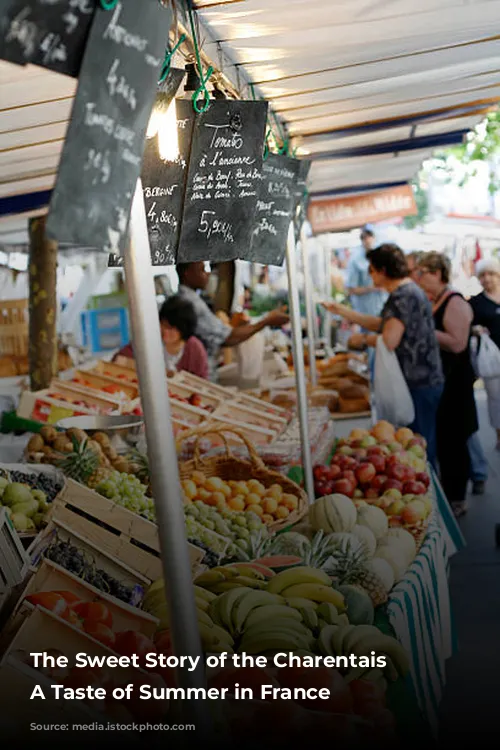
From Ancient Origins to Royal Tables
The journey of the melon, a member of the Cucurbitaceae family alongside pumpkins and cucumbers, spans centuries. Its origins can be traced back to Egypt around 500 BC, where it was initially consumed as a vegetable. The melon was introduced to Greece and Italy around 100 AD, but it lacked the sweetness we associate with it today. Over time, sweeter varieties were developed, leading to its transformation into the fruit we know and love.
The Renaissance era saw monks cultivating melons for the Popes at their summer residence in Cantalupo, Italy, giving rise to the term “Cantaloupe melon.” When the Popes relocated to Avignon in the 14th century, the monks brought melon seeds with them, spreading the delight of this fruit throughout the region. The melon soon captured the hearts of the French royal family, but its journey to the court in Paris was challenging due to its distance from the south. This led to the cultivation of melons in the Charente region, giving birth to the Charentais melon, a unique variety named after its region of origin.
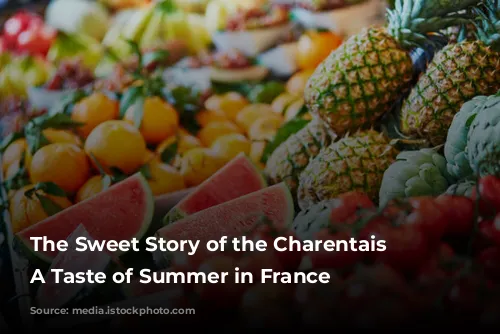
Cultivating Excellence: From Seed to Table
The Charentais melon is a testament to the dedication and artistry of French farmers, who have mastered the art of cultivating this delicate fruit. Today, it is primarily grown in three distinct areas of France: the South East (39%), the Centre-West, including the Charente (34%), and the South-West (27%). The quality of the melon is highly prized, with three regions earning the IGP (indication géographique protégée) label, guaranteeing a certain level of sweetness. These regions include the Melon du Haut-Poitou, Melon du Quercy, and Melon de Guadeloupe, each producing melons with distinctive flavors and aromas.
Bernard Chiron, a passionate melon producer and President of the Association Interprofessionnelle du Melon, embodies the spirit of melon cultivation in France. He has been cultivating melons alongside his father for years in Cavaillon, Vaucluse, a region renowned for its exceptional melons. Mr. Chiron emphasizes the challenges of growing melons, highlighting their sensitivity to weather and demanding care. “Most amateur gardeners can grow tomatoes, but very few can produce a good melon,” he explains. Melons require ample space, good soil, and crop rotation, making their cultivation a true labor of love.
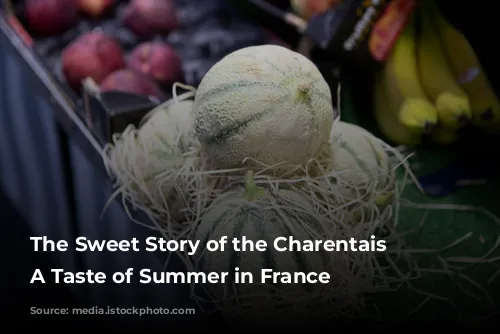
A Symphony of Flavor: The Art of Melon Selection
Choosing the perfect Charentais melon is a delightful adventure, an art form in itself. Mr. Chiron shares his expertise, emphasizing the importance of examining the stalk, seeking a star-shaped crackle at its base, and selecting a melon that is heavier for its size, indicating ripeness. The skin should be firm but supple, with a sweet and inviting aroma.
The Charentais melon, with its 90% water content and rich vitamin B9 and vitamin A, is a nutritious and flavorful treat. But its true essence lies in its complex flavors and aromas, a symphony of at least 80 scientifically measurable notes. Mr. Chiron likens the melon to a fine wine, each fruit a unique masterpiece, requiring a discerning palate to appreciate its full potential.
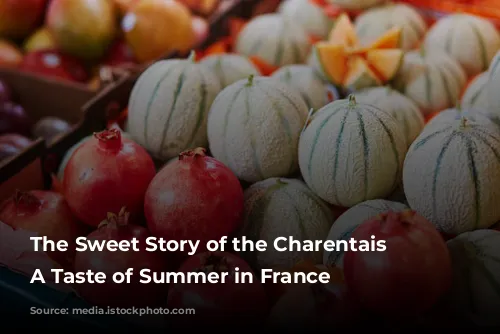
A Summer Delight to Share
The Charentais melon is a symbol of summer joy, a fruit that evokes warmth, laughter, and the pleasure of sharing. Whether enjoyed with an aperitif, on a picnic, or simply as a sweet treat, the melon brings smiles and strengthens bonds. To savor its full flavor, the Association Interprofessionnelle Melon advises consuming it within six days of purchase. Store it in the vegetable compartment of your fridge, covered in plastic film, and allow it to reach room temperature an hour before enjoying its juicy sweetness.
The next time you see a Charentais melon, remember the centuries of history, the dedication of farmers, and the joy it brings to those who savor its sweetness. Enjoy the taste of summer, one juicy slice at a time.
